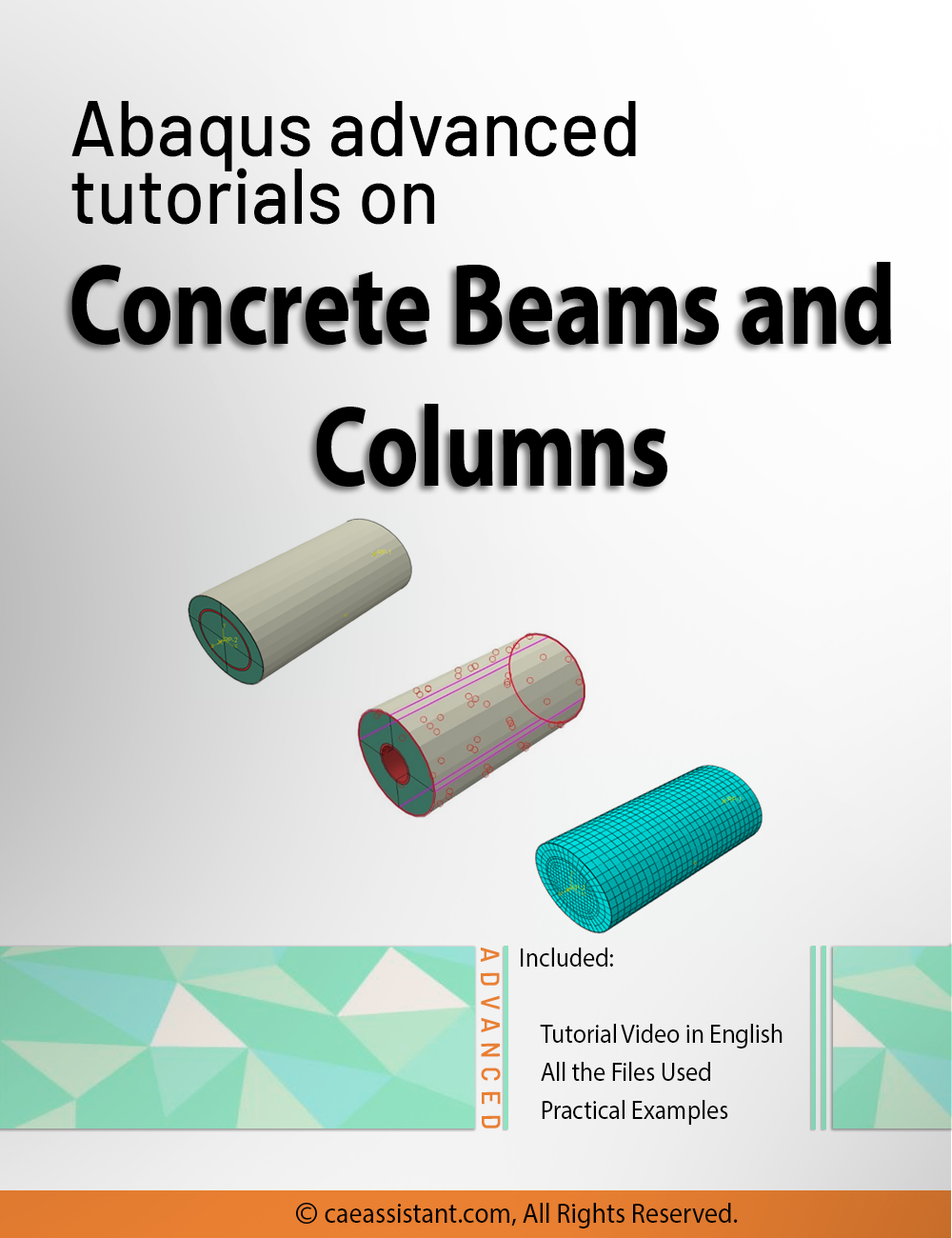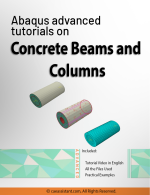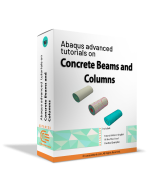The “Abaqus Advanced Tutorials on Concrete Members” course is designed for civil and structural engineers looking to deepen their expertise in finite element modeling (FEM) of complex concrete and composite structures. This course provides a step-by-step approach to simulating advanced concrete member behaviors under various loading conditions using Abaqus, one of the most powerful tools for computational structural analysis. Whether you are an experienced engineer or a researcher, this course will provide you with the advanced skills needed to simulate and assess concrete structures in high-stress environments.
Course Overview and Objectives
This advanced-level tutorial focuses on simulating different types of concrete columns reinforced with steel or fiber-reinforced polymer (FRP). The primary goal is to equip participants with practical skills in modeling tubed, hollow, and tapered columns under axial and eccentric compression loads. You will learn how to create detailed finite element models, apply material properties, and compare results with experimental data from the latest published research. The course also covers complex composite columns, including double skin steel columns with elliptical or square cross-sections, allowing you to explore real-world structural behaviors.
Key Topics Covered
The course dives into advanced structural modeling topics, which are broken down into distinct lessons:
- Tubed Reinforced Concrete Columns Under Axial Compression:
In this lesson, participants will explore the modeling of tubed reinforced concrete columns and simulate axial compression tests. The session emphasizes comparing FEM results with experimental findings from research papers to ensure model accuracy and reliability. - Tubed Reinforced Concrete Columns Under Eccentric Compression:
This lesson moves into the complexities of eccentric compression loading. You will learn how to model these columns and analyze how eccentric loads affect the structural integrity and behavior of reinforced columns. - Circular Concrete Filled Double Skin Steel Columns Under Axial Compression:
Participants will study circular double skin steel columns, focusing on the FEM simulation of axial compression. The comparison with experimental results will highlight how double skin columns behave under intense loading. - Circular Hollow Double Skin Steel Concrete Columns:
This lesson covers hollow circular columns reinforced with double skin steel under axial compression. The emphasis is on accurately simulating hollow structures and understanding their failure mechanisms under compressive loads. - Fiber-Reinforced Polymer-Concrete-Steel Composite Columns:
In this session, participants will model composite columns reinforced with fiber-reinforced polymer (FRP) and steel. The lesson provides insight into the composite material behavior under axial compression and explores how FRP enhances the structural strength of concrete columns. - Elliptical and Tapered Concrete Filled and Hollow Double Skin Steel Columns:
These lessons explore the finite element modeling of elliptical and tapered concrete columns with double skin steel reinforcements. Various cross-sections (circular, square, and elliptical) are examined, with an emphasis on compression loading and result validation using experimental data. - Circular Double Skin Steel Columns with Square Internal Tubes:
Participants will model a circular double skin steel column with a square internal tube, applying axial compression loading. The simulation focuses on how the internal tube geometry impacts the structural performance under compression. - Square Double Skin Steel Columns with Circular Internal Tubes:
In this final lesson, the course delves into the modeling of square double skin steel columns with circular internal tubes. Participants will simulate the compression tests and assess how cross-sectional shapes affect the overall column behavior.





Reviews
Clear filtersThere are no reviews yet.